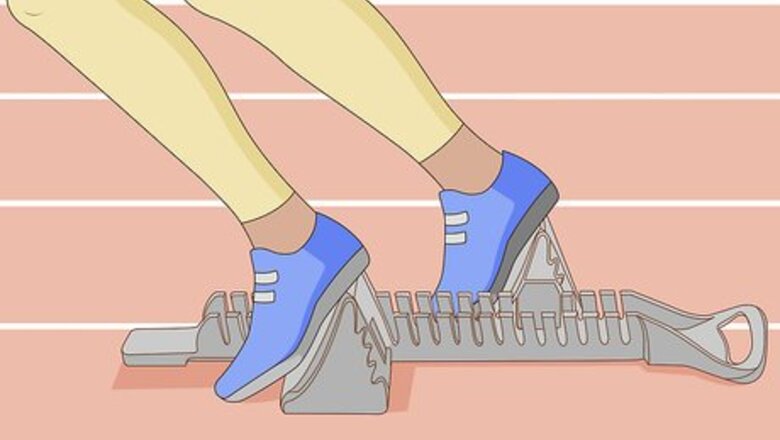
views
Starting a Competitive Track Race
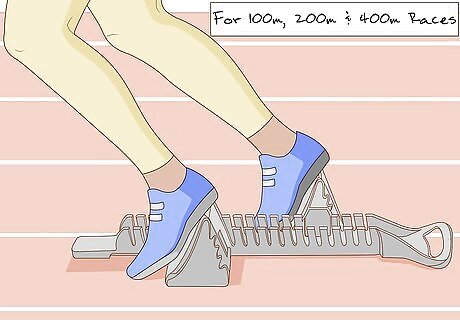
Use a starting block for sprints. Blocks are encouraged for the 100m, 200m, and 400m races. Practice with them during training so you know how to use them for the race. If you've never used them before, read this article or talk to a track coach or teammate. Do not use blocks when running 800m or farther. The starting position for longer races is covered later in this section.
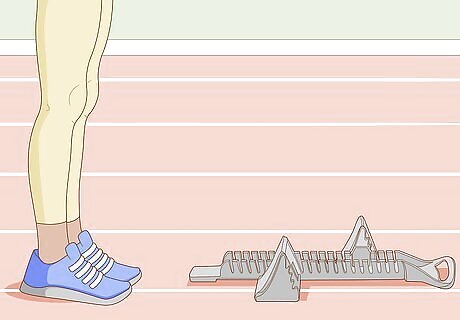
Stand behind the block. If you are using a starting block, stand behind it once you're satisfied with its position. This lets the starter know you are ready to begin.

Get onto the block after the first whistle. When the starter blows the first whistle, get in front of the block, get down on all fours, and back onto the block. Make sure your fingertips are almost touching the starting line, but not quite. Stay on your knees with your butt on your heels. If you like, you can jump, shake your legs, or prepare as you prefer before stepping onto the block.
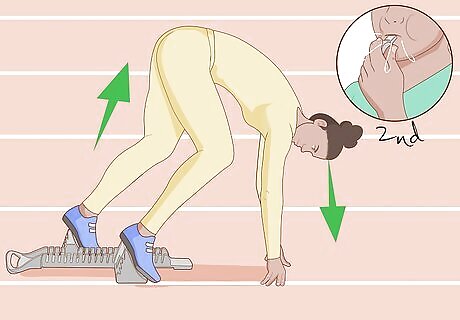
Lift your butt at the second whistle. This is your cue to get into the proper starting position. Lift your butt as high as you can. Do not make the mistake of raising your head; you should be looking down at your hands or the ground, not at the track ahead of you.
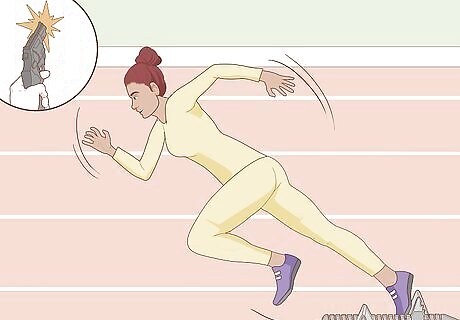
Race at the sound of the gun. After one or two seconds, the starter will fire the pistol and the race will be on. Novice sprinters will need some practice before they learn to go on the "B of the bang," so to speak.
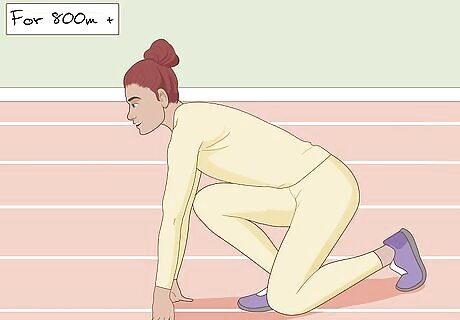
Get in position for longer races. If you are running an 800m race or longer, do not use blocks. Stand behind the start line in a running position, with your elbows at a 90º angle, your chin up, and your eyes looking at the horizon.

Get ready on the first whistle. Since there are no blocks, there is only one whistle before the pistol is fired. You should already be in the starting position, so the whistle is just a heads up to be mentally prepared.
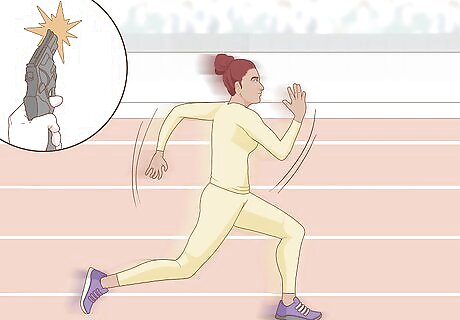
Run on the pistol. Unlike a sprint, it's important to pace yourself. If you are not the fastest person in the race, you should not be in the front. Pick a speed you can maintain for the whole race, so you do not slow down until you've crossed the finish line.
Starting A Long Distance Race
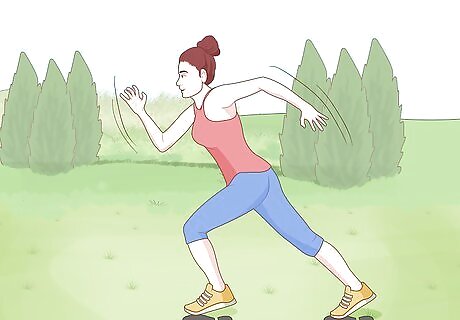
Learn to pace yourself in advance. Letting other runners determine your pace is a common mistake. If you try to overtake the other runners right out of the gate, you'll wear yourself out and hurt your finish. Finding your pace and learning your strengths and weaknesses has to happen during training, not when you're already racing: Breathe in deep, calm breaths through your nose for as long as you can. Avoid short, sharp, shallow breathing as long as you can. Find a stride that you can keep up comfortably for most of the race. Get used to the rhythm of this stride, learning the pattern of your strides and breaths. Set a goal for yourself before you attend the race, based on this pace. EXPERT TIP Tyler Courville Tyler Courville Professional Runner Tyler Courville is a brand ambassador for Salomon Running. He has run in 10 ultra and mountain races across the United States and Nepal, and won the 2018 Crystal Mountain Marathon. Tyler Courville Tyler Courville Professional Runner Tyler Courville, ultra and mountain runner, advises: “You can use your breathing as a mark of your pace when you're training. If you’re trying to have a recovery day, you should be able to have a full conversation while running, without running out of breath. But, if you're trying to run at a race pace, you should maybe be able to say one word, if you had to.”

Warm up before the race. Light jogging or other dynamic stretching is the way to go. Static stretches will set you back by relaxing your muscles. Jog at a moderate pace for about 1 10 {\displaystyle {\frac {1}{10}}} {\frac {1}{10}} to 1 4 {\displaystyle {\frac {1}{4}}} {\frac {1}{4}} mile (0.16–0.4 km), about half an hour before the race begins.

Position yourself with others at your skill level. Don't stand at the starting line unless you're aiming for a top result. New runners often feel intimidated if all the people nearby zoom right past them. If this is one of your first races, start further back and you'll realize there are people of all skill levels competing.
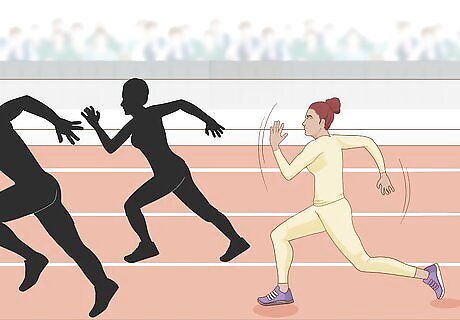
Avoid congestion early in the race. You'll want to run as soon as the gun fires, but pay attention to the people around you. You may need to slow down for the person ahead of you before you can maneuver to a better position.

Think about your pace after 30 seconds. This is a good tactic for new racers, who often lose their rhythm in the excitement. After 30 seconds, think about your rhythm, breathing, and any pain you're feeling. If you're pushing too hard, take it down a notch. If you think you have the capacity, you can try to push yourself slightly harder than your regular pace, to get your (slightly painful) "race pace." It's easy to burn out this way without practice, so don't do this unless you're feeling very comfortable.
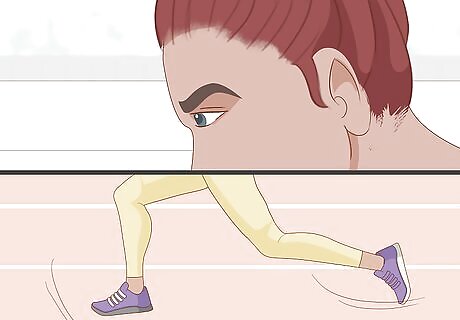
Stay focused. Some runners say running is 10% physical and 90% mental. Stick to your goal pace, and don't let nerves cause you to run too fast or disrupt your rhythm. If you're competing in a large race, don't worry about the people around you. They're all working on their own goals, and what they do or think doesn't affect your race.


















Comments
0 comment